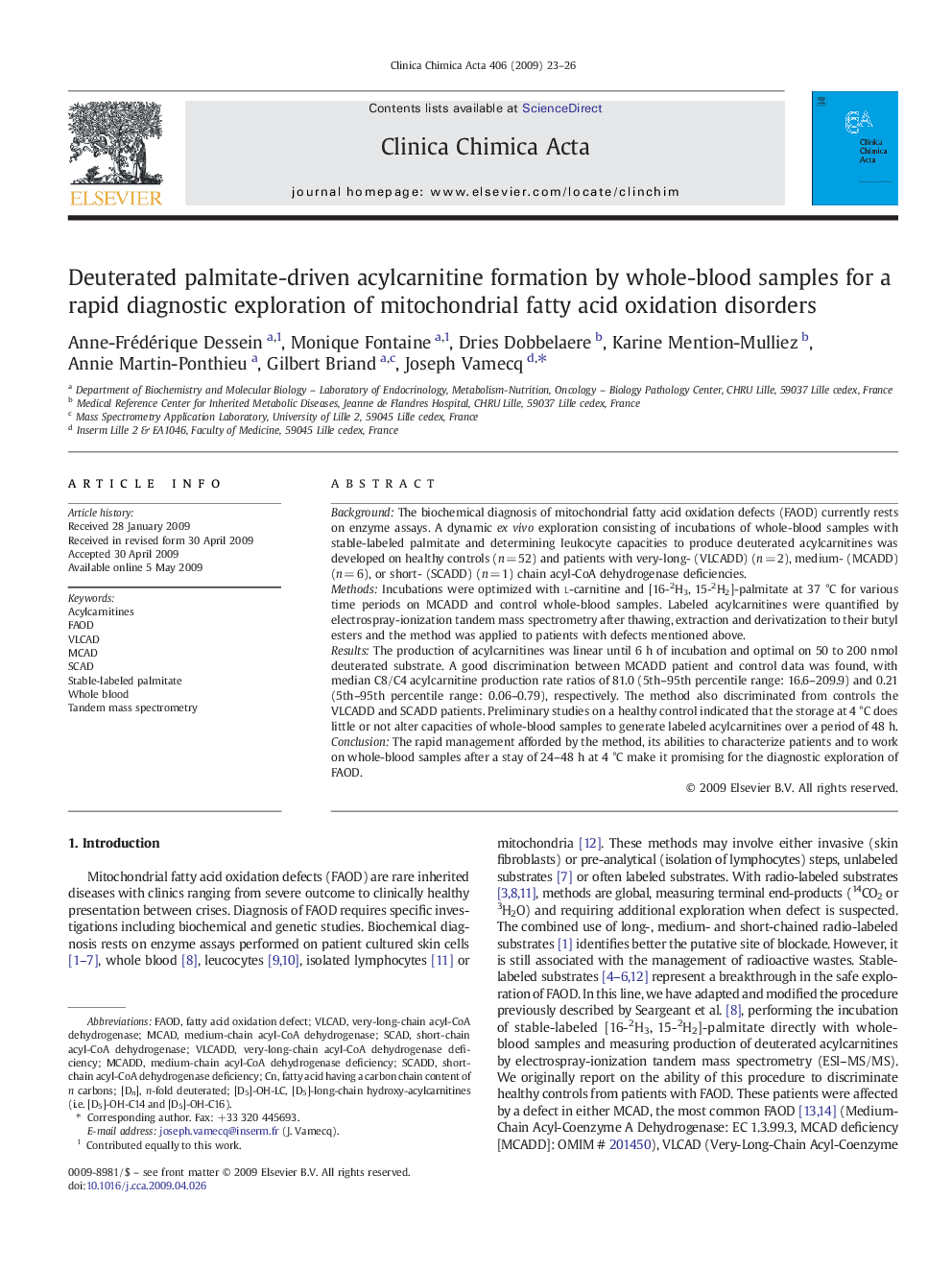| کد مقاله | کد نشریه | سال انتشار | مقاله انگلیسی | نسخه تمام متن |
|---|---|---|---|---|
| 1966562 | 1538725 | 2009 | 4 صفحه PDF | دانلود رایگان |

BackgroundThe biochemical diagnosis of mitochondrial fatty acid oxidation defects (FAOD) currently rests on enzyme assays. A dynamic ex vivo exploration consisting of incubations of whole-blood samples with stable-labeled palmitate and determining leukocyte capacities to produce deuterated acylcarnitines was developed on healthy controls (n = 52) and patients with very-long- (VLCADD) (n = 2), medium- (MCADD) (n = 6), or short- (SCADD) (n = 1) chain acyl-CoA dehydrogenase deficiencies.MethodsIncubations were optimized with l-carnitine and [16-2H3, 15-2H2]-palmitate at 37 °C for various time periods on MCADD and control whole-blood samples. Labeled acylcarnitines were quantified by electrospray-ionization tandem mass spectrometry after thawing, extraction and derivatization to their butyl esters and the method was applied to patients with defects mentioned above.ResultsThe production of acylcarnitines was linear until 6 h of incubation and optimal on 50 to 200 nmol deuterated substrate. A good discrimination between MCADD patient and control data was found, with median C8/C4 acylcarnitine production rate ratios of 81.0 (5th–95th percentile range: 16.6–209.9) and 0.21 (5th–95th percentile range: 0.06–0.79), respectively. The method also discriminated from controls the VLCADD and SCADD patients. Preliminary studies on a healthy control indicated that the storage at 4 °C does little or not alter capacities of whole-blood samples to generate labeled acylcarnitines over a period of 48 h.ConclusionThe rapid management afforded by the method, its abilities to characterize patients and to work on whole-blood samples after a stay of 24–48 h at 4 °C make it promising for the diagnostic exploration of FAOD.
Journal: Clinica Chimica Acta - Volume 406, Issues 1–2, 11 August 2009, Pages 23–26